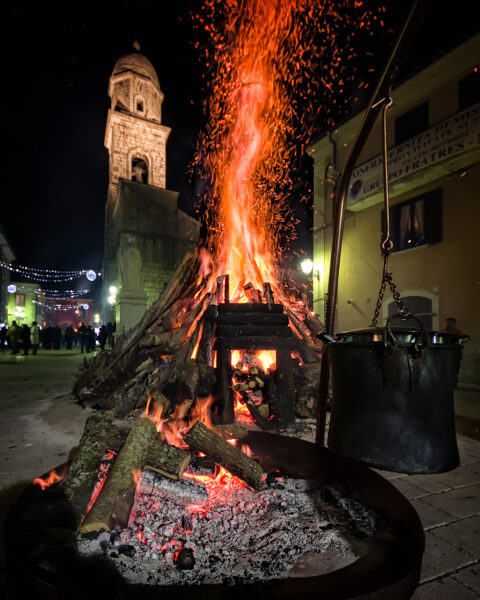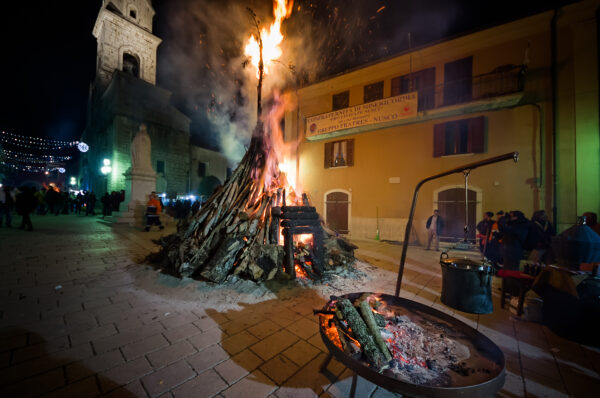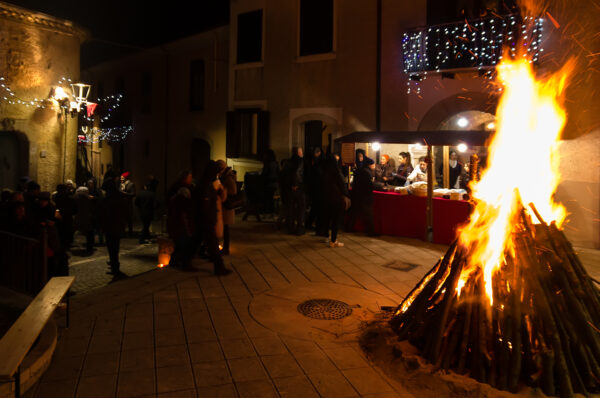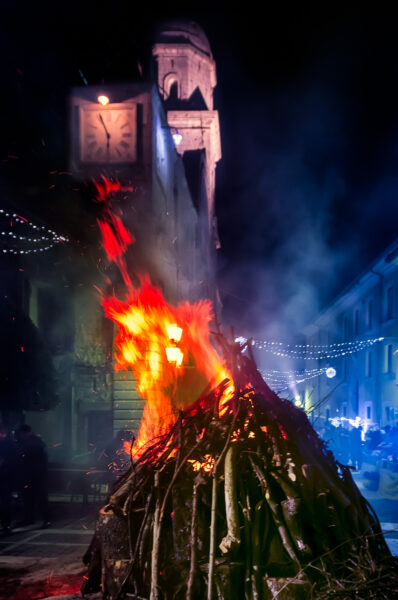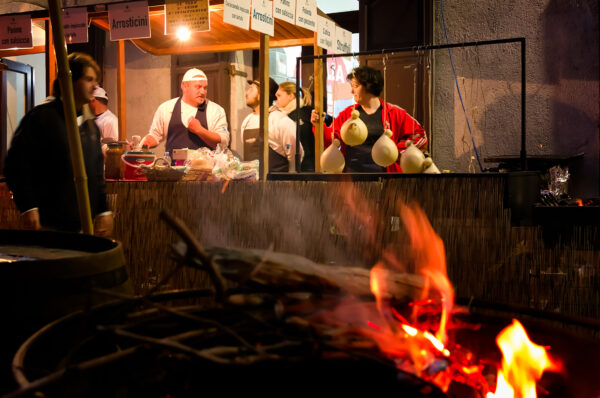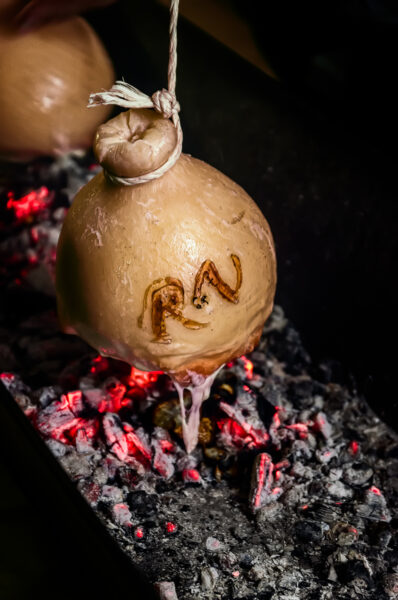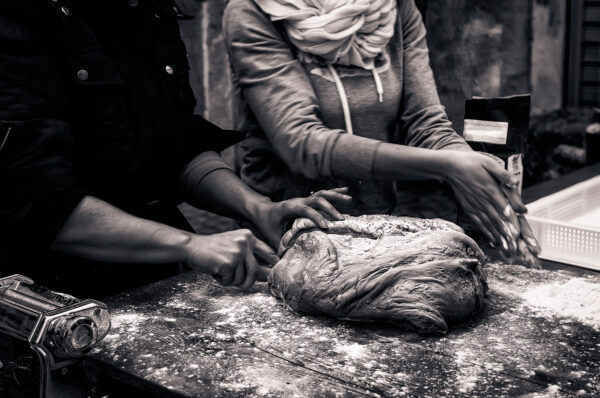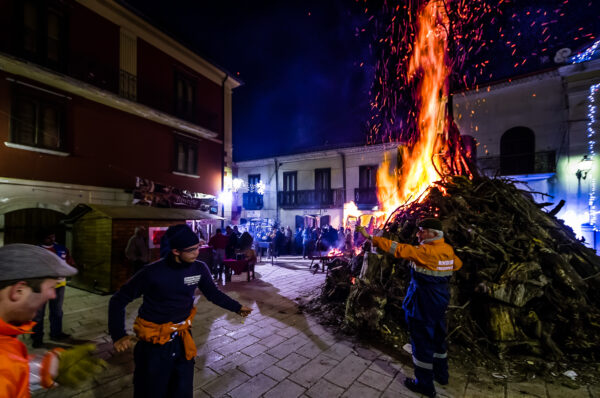This is the story of a dark night—the darkest night of the year—at least, that is what they say in Southern Italy. It is a night lit up by fascinating bonfires.
We are in Nusco, in Campania, province of Avellino, the green and hilly Irpinia.
Nusco
Nusco sits on a windy hilltop at almost a thousand meters in height. With the morning light, from here you get a wonderful view over the valley of the Ofanto River and the Southern Apennines mountains.
During a January night, it’s freezing cold, but it’s well worth a visit.
And now it’s the night of January 17th.
Sant’ Antonio Abate
A night dedicated to Sant ‘Antonio Abate (Anthony the Great): the Christian saint who stole the fire from the devil to give it to mankind. He is the protector of animals (including pigs); the saint who helps to find lost objects.
And it’s the night of the bonfires, or focaroni as they call them here.
The bonfires night in Nusco
It is not just a religious rite. It is reminiscent of ancient paganisms that evoked light on one of the darkest nights of the year. A rite of passage from the darkness of winter to the light of next spring, it is also a rite of passage towards Carnival.
In the past, when people lived here only for agriculture and pastoralism, these were the days when – while the fields were resting in the snow – the farmers could enjoy a few days of idleness before starting to prepare the new plantings. The fires are the acme of this enforced but pleasing rest, an ephemeral escape from a wretched life.
Woodpiles are stacked in front of every church, in every open space and square of the Old Town.
The biggest piles are in front of the parish church and the town hall.
As darkness advances, the wait grows. At a given signal (fireworks in the air!) all the woodpiles are lit and the festival begins.
The fires illuminate and heat up. They drive the darkness away, strengthening the hope that soon springtime will come to break this cold.
Around them, people sing and dance and costumed characters wander around. Everybody eats and drinks to throw the cold away.
Old traditions and modernity
Over the years the festival has lost some of its archaic and mysterious characters; its popularity slightly debunks its charm.
Modernity stepped over archaism in terms of commodification.
That’s not completely negative. Now you can find for sale that traditional food that once you could only get if invited to somebody’s house.
The lord of the festival is pork. It can be enjoyed in a thousand different recipes, from sausages to cicoli .
Delicacies!
Another traditional preparation is the so-called hanged cheese. A form of caciocavallo cheese is suspended (hanged) over hot coals. The melt is spread on a slice of bread, sometimes with the addition of oil and/or truffles.
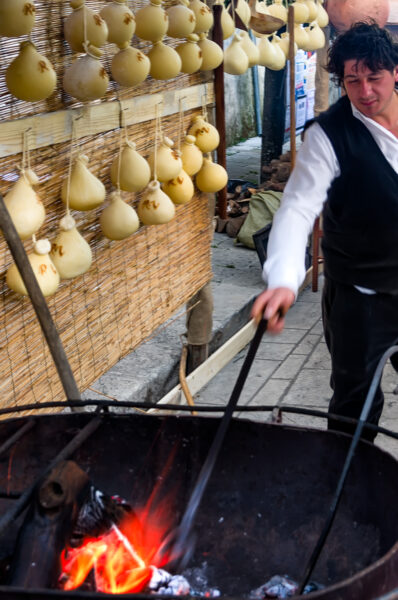
If you’re mouthwatering while reading this, just know that tasted personally it is much better!
Later in the night, the crowd of tourists comes to eat and warm up by the last fires and to delete the charm of the night.
If you want to get off the beaten path, you should know that there is a tradition of competition among all the villagers to create the biggest and best “private” bonfire.
Here, in the alleys, away from the crowd, everything is more genuine. It is not uncommon to be invited for a glass of wine or for something more substantial, like laine. They are handmade pasta like tagliatelle but a bit shorter and thicker. They are boiled and served with cheese and mushrooms or with ragout. And they are an absolute and rare delicacy.
Did you like it? For more beautiful photos and travel stories, just use the menu above and browse the site. Do you know that you can send any of my images as an e-card?
Just choose your favourite image, press the e-card- button down on the right and that’s it, the pic is ready to be sent to your loved ones! Just give it a try, it’s fun and it’s free!
Would you also like to read all my upcoming travel stories? Just click here and subscribe to my newsletter.
I will mail you only when I release a new article. Your information is 100% safe and never shared with anyone


